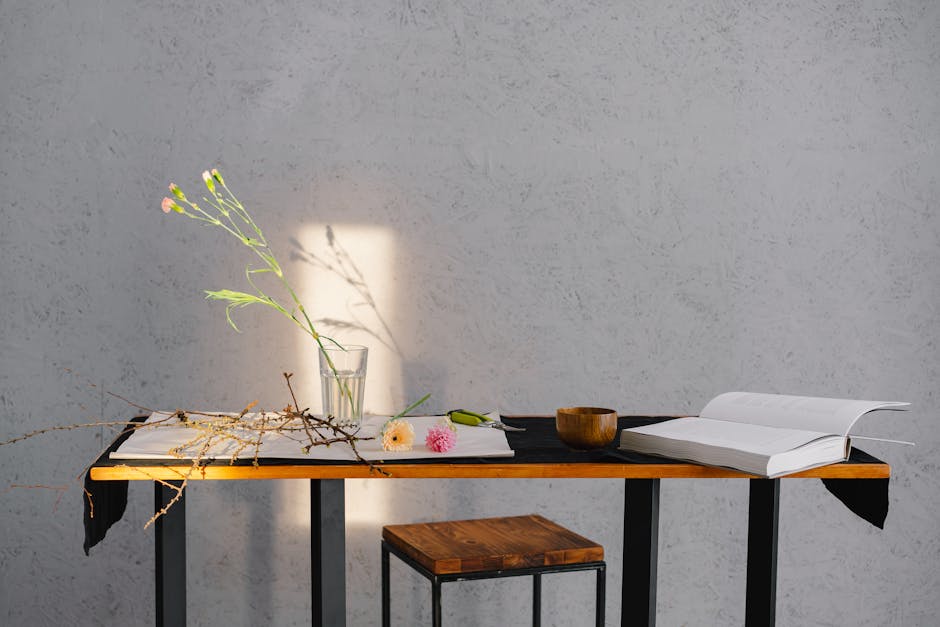How to Use Biofeedback for Stress Management
In today’s fast-paced world, stress has become a common companion for many of us. But what if there was a way to manage it effectively without medication or lengthy therapy sessions? Enter biofeedback, a powerful tool that helps you harness the power of your mind and body to combat stress. ?
Table of Contents
1. Introduction to Biofeedback
2. How Does Biofeedback Work?
3. Benefits of Using Biofeedback for Stress Management
4. Getting Started with Biofeedback
5. Tips for Maximizing Biofeedback’s Effectiveness
6. Conclusion
7. FAQ
Introduction to Biofeedback
Biofeedback is a technique that allows you to gain greater awareness and control over physiological functions using real-time feedback. By monitoring bodily responses such as heart rate, muscle tension, and skin temperature, you can learn to control these functions to improve your health and well-being. ?
How Does Biofeedback Work?
Biofeedback uses sensors and devices to measure bodily processes and provide feedback through visual or auditory signals. For instance, you might see a display of your heart rate or hear a tone that changes pitch as your stress levels fluctuate. With practice, you can learn to influence these signals voluntarily, promoting relaxation and reducing stress.
Benefits of Using Biofeedback for Stress Management
Here are some compelling reasons to consider biofeedback for managing stress:
– **Non-Invasive:** Biofeedback is a non-invasive method, meaning it doesn’t require surgeries or medications. ??
– **Empowering:** It provides you with the tools to take control of your stress response, enhancing self-awareness and empowerment. ?
– **Improved Mental Health:** Regular practice can lead to reduced anxiety and depression levels.
– **Better Sleep:** Many users report improved sleep quality after incorporating biofeedback into their routine. ?
Getting Started with Biofeedback
Ready to give biofeedback a try? Here’s how to get started:
1. **Choose the Right Device:** There are various biofeedback devices available, from wearable gadgets to apps. Research and select one that suits your needs and budget.
2. **Find a Qualified Practitioner:** If you’re new to biofeedback, working with a trained professional can be beneficial. They can guide you through the process and help you interpret the data.
3. **Set Clear Goals:** Determine what you want to achieve with biofeedback, whether it’s reducing stress, improving focus, or enhancing overall well-being.
Tips for Maximizing Biofeedback’s Effectiveness
To get the most out of biofeedback, consider these tips:
– **Consistency is Key:** Practice regularly to build skills and see results. ?
– **Combine with Other Techniques:** Integrate biofeedback with other stress management techniques like meditation or yoga for a holistic approach.
– **Track Your Progress:** Keep a journal to monitor changes and improvements over time.
Conclusion
Biofeedback offers a promising approach to managing stress, empowering you to take control of your body’s responses. With practice and patience, you can harness this tool to lead a healthier, more relaxed life. Why not start today and see the difference it can make? ?
FAQ
1. What is the best biofeedback device for beginners?
There are many user-friendly devices on the market, such as the Muse headband or HeartMath Inner Balance. It’s best to try a few and see which one you find most comfortable and effective.
2. How long does it take to see results from biofeedback?
Results can vary, but many people notice improvements within a few weeks of consistent practice. The key is to stay patient and committed.
3. Can biofeedback be used to treat conditions other than stress?
Yes, biofeedback is also used for managing pain, improving focus, treating anxiety, and even helping with conditions like ADHD and migraines.
4. Is biofeedback safe for everyone?
Biofeedback is generally safe for most people. However, it’s always wise to consult a healthcare provider, especially if you have underlying health conditions.
5. Do I need a professional to practice biofeedback?
While having a professional can be helpful, especially in the beginning, many people successfully use biofeedback devices at home with guidance from online resources and manuals.
For more information please click here
James Donaldson is a Washington State University graduate (’79). After an outstanding basketball career with WSU, he went on to play professional basketball in the NBA with the Seattle Supersonics, San Diego/L.A. Clippers, Dallas Mavericks, New York Knicks, and Utah Jazz. He also played for several teams in the European Leagues in Spain, Italy, and Greece, and he toured with The Harlem Globetrotters to wrap up his career. James was an NBA All-Star in 1988 while playing center for the Dallas Mavericks. In 2006, James was inducted into the Pac-10 Sports Hall of Fame and also the Washington State University Athletic Hall of Fame. In 2010, James was elected as a board member for the NBA Retired Players Association.
James frequently conducts speaking engagements (motivational, inspirational, educational) for organizations, schools, and youth groups.
In 2010, James was the recipient of the NBA Legends of Basketball ABC Award, awarded for outstanding contributions in Athletics–Business–Community.
He believes in being a role model for success and professionalism to the scores of young people to whom he devotes so much of his time. He currently serves on several boards and committees and is a member of many organizations.
James believes in developing relationships that create a “Win-Win” environment for everyone involved, and in being the best he can be!
For more information about James Donaldson or to request he speak at your event, contact him at:
www.StandingAboveTheCrowd.com
[email protected]
1-800-745-3161 (voicemail & fax)
James Donaldson is the author of “Standing Above The Crowd” and “Celebrating Your Gift of Life” and founder of the Your Gift of Life Foundation which focuses on mental health awareness and suicide prevention, especially pertaining to our school aged children and men.
If you’re interested in having James come and speak to your group of young adults, business entrepreneurs, aspiring political and community leaders, and athletic teams, please contact him at [email protected] and or leave a personal message for him at 1-800-745-3161. Keep up with him and read about how he is reaching out and making a difference in the lives of so many around the world at www.yourgiftoflife.org




